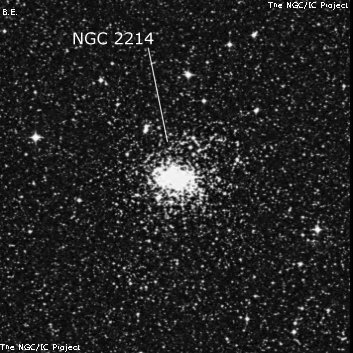
James Dunlop discovered NGC 2214 = D 201 on 27 Sep 1826 and described "a round well-defined small nebula, 20" diameter, bright at the centre." Dunlop made 3 observations and his position is about 2' SW of center (unusually accurate).
John Herschel made two observations, first on the sweep of 30 Jan 1835 when he recorded h3039 as "B; S; R; or lE; resolved into stars 14...16m; 50"." On a second sweep he logged it as "B; irreg R; or lE; gbM; 80"; resolvable."
Pietro Baracchi sketched the cluster on 4 Jan 1886 and described it as "B; S; lE; Elliptical, even in density, mottled, resolvable. It seems a double nebula or at the least there is some dark division about the middle of the object." On his diagram the object is elongated SSW-NNE and consists of two tangent clumps with a mag 15 star attached at the northeast end and another mag 15 star close south of the east end.
400/500mm - 18" (4/3/16 - Coonabarabran, 236x): this young massive LMC cluster appeared very bright, fairly large, noticeably elongated E-W, ~1.6'x1.1'. About a half-dozen stars were resolved around the edges and within the main glow. Well concentrated with a bright central region and a slightly mottled halo.
Notes by Steve Gottlieb